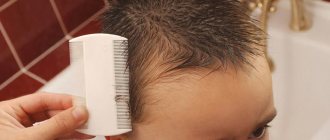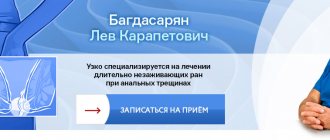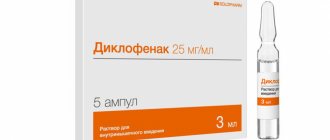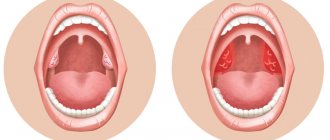Hemorrhoids are a disease of the blood vessels located in the rectum. With this pathology, they weaken and expand, which is why they cannot cope with the task assigned to them - draining venous blood from the rectum. The disease is accompanied by swelling of the veins and their prolapse from the anus, pain, bleeding and inflammation of the rectal mucosa and the skin around the anus. To successfully fight the disease, it is important to know the causes of hemorrhoids. In this case, it will be possible to direct efforts to eliminate factors that negatively affect the plexuses of blood vessels in the pelvis and rectum, which will stop the pathological process and restore them to their former elasticity.
Types of hemorrhoids
In proctology, several types of hemorrhoids are distinguished depending on the location of the nodes and the course of the disease. So, hemorrhoids can be:
- Acute - when the symptoms manifest themselves in full force, and the nodes swell as much as possible. Acute hemorrhoids last for a limited number of days, and then the symptoms subside.
- Chronic - when symptoms are mild, occur periodically, and the disease itself progresses over several months or even years. Each subsequent exacerbation is characterized by an increase in symptoms.
- Internal - when hemorrhoids are located under the mucous membrane of the rectum above the serrated edge.
- External - when the nodes are localized below the serrated edge and are located near the anus under the skin.
- Combined - when hemorrhoids do not have a clear localization, and the patient has both internal and external venous formations.
Whatever the types and forms of the disease, the reasons why hemorrhoids occur are almost always the same.
Which method is the most reliable?
Hemorrhoids are a disease that occurs as a result of expansion of the arterial collectors of the rectum.
In addition to a hereditary predisposition to the development of hemorrhoids, the following lead to: ___• stool disorders (constipation, diarrhea), ___• sedentary lifestyle, ___• sedentary work, ___• overweight, ___• heavy physical activity, ___• diseases of the digestive system, ___• pathologies, increasing intra-abdominal pressure (ascites, emphysema, chronic cough, etc.), ___• pregnancy.
The duration of the relapse-free period for hemorrhoids does not depend on the method of eliminating the enlarged node. To prevent the disease from returning, it is necessary to eliminate all factors contributing to the development of pathology - this is a necessary and sufficient condition for maintaining your health.
Causes of hemorrhoids
There are not many reasons for the appearance of hemorrhoids, and they all come down to three phenomena: changes in the vascular wall, disruption of venous outflow and decreased tone of blood vessels in the pelvis and rectum. Various factors can provoke such changes, and each of them can negatively affect several directions at once - for example, weaken the walls of blood vessels and interfere with normal blood flow.
Causes of impaired venous outflow
The most common cause of hemorrhoids is stagnation of venous blood in the pelvic organs and cavernous bodies of hemorrhoids. This can lead to:
- lack of movement - sedentary work, forced position in a static position (including standing);
- obesity - extra pounds limit physical activity and negatively affect blood vessels and the heart, which often causes venous stagnation;
- pregnancy is a typical cause of hemorrhoids in women, which provokes venous stagnation in the rectum;
- lifting weights is a typical cause of hemorrhoids in men, which, just like pregnancy in women, causes stagnation of blood in the pelvis, but due to increased intra-abdominal pressure;
- the presence in the pelvic organs of benign or malignant neoplasms that compress nearby blood vessels and prevent normal venous outflow.
Causes of weakening and thinning of the venous wall
The cavernous bodies of hemorrhoids are penetrated by vessels - arteries and veins, through which blood flows into them and, accordingly, is drained back. Damage to the walls of these vessels causes them to be unable to withstand blood pressure. The result is that the walls of the blood vessels stretch and bulge. The following factors can lead to this:
- age-related changes - over time, the human body produces fewer proteins, from which connective tissue is synthesized, which is responsible for the elasticity of the vascular wall;
- hormonal fluctuations - hormones released during pregnancy or menopause negatively affect the walls of blood vessels, weakening them (such changes can also be provoked by taking hormonal contraceptives;
- hereditary predisposition - some genes cause congenital weakness of connective tissue, as a result of which such people suffer not only from hemorrhoids, but also varicose veins of the lower extremities, a tendency to dislocate joints, etc.;
- chronic liver diseases (cirrhosis and hepatitis), in which venous outflow is impaired;
- arterial hypertension.
Reasons causing changes in vascular tone
The condition of the vascular wall, or more precisely, their tone, can be influenced by various factors. If we talk about hemorrhoidal plexuses, then the dominant role in changing the tone of the arteries and veins in them is played by the foods consumed. The dilatation of arterial vessels in the cavernous bodies of the rectum can be caused by:
- capsaicin - a substance found in red peppers and other spicy foods;
- nicotine is a component of cigarettes and hookah smoking mixtures;
- caffeine is a component of the well-known invigorating drink and some medications.
The absence or low content of fiber in food has a similar effect on blood vessels as the substances listed above. An incorrectly composed diet provokes chronic constipation, and this may well lead to hemorrhoids.
Stress is considered an equally dangerous phenomenon for vascular tone - situations in which certain hormones and enzymes are released. They can cause an increase in blood pressure, affect bowel movements, and increase blood flow to the hemorrhoidal plexus. Taken together, this often leads to hemorrhoids.
How to cure hemorrhoids during pregnancy?
Doctors have to think especially carefully about how to cure hemorrhoids after childbirth or during pregnancy. Many medications are prohibited to be taken during pregnancy and lactation, so most often doctors achieve stabilization of the patient’s condition, eliminate pain, and begin full treatment after the end of lactation.
Lactation consultants have their own point of view on the issue of drug treatment during lactation. They draw women's attention to the fact that many medications are prohibited from taking during pregnancy and lactation due to the fact that their effect on the child has not been thoroughly studied. Therefore, we cannot say unequivocally that all of them bring harm to the child. It may well be that when the appropriate studies are carried out, many drugs will be allowed to be taken. In the meantime, the Ministry of Health prefers to play it safe; women have at their disposal a minimal arsenal of means to solve “delicate” problems.
To treat hemorrhoids during pregnancy, be sure to consult your doctor.
How to deal with the disease at different stages
The expansion of hemorrhoidal veins requires an immediate response already at the initial stage of its development. In this case, it is necessary to clearly establish why hemorrhoids occurred in a particular situation, and try to reduce the negative influence of factors to a minimum. In addition, it is important to begin eliminating the consequences of changes as early as possible in accordance with the stage of the disease:
- At the first stage of hemorrhoids, drug treatment with topical drugs with anti-inflammatory, regenerating, analgesic and venotonic effects is recommended. Sclerosis of hemorrhoidal veins can also be used. Patients are also advised to follow a diet and increase physical activity.
- The second stage of hemorrhoids involves the same treatment as in the first stage, but with the use of oral medications (local ones are also included in the treatment regimen). In addition, radical methods for eliminating hemorrhoids are used: sclerotherapy, ligation, laser removal of nodes, cryotherapy or coagulation of nodes.
- The third stage of hemorrhoids requires more radical measures, and therefore conservative therapy gives way to surgical treatment - hemorrhoidectomy and vein disarterization and the use of various technologies (laser, radio waves). Latex ligation of nodes is also used at this stage.
- The fourth stage of hemorrhoids is complicated by complete prolapse of the nodes and a high probability of thrombosis and heavy bleeding. Effective methods of treating hemorrhoids at this stage are laser coagulation and hemorrhoidectomy (laser or radio wave). For vein thrombosis, thrombectomy is performed. Conservative therapy for this degree of disease is ineffective.
Regardless of what stage of hemorrhoids occurs, in parallel with the methods described above, it is necessary to apply preventive measures. They are most often aimed at eliminating the causes of hemorrhoids. This allows you to lengthen the relapse-free period and avoid further progression of the disease.
List of effective drugs
Common remedies for hemorrhoids are divided according to their effect in suppressing symptoms, active ingredients and cost. The list of popular medications is presented:
Relief
Medicine with anti-inflammatory, vasoconstrictive and regenerative spectrum of action. By reducing the lumen of blood vessels, the burning sensation and itching are reduced, and tissue restoration begins. The ointment stops bleeding and reduces the level of inflammation. The medicine is recommended for use for fissures in the anal area.
The drug is prohibited:
- patients under 12 years of age;
- with thromboembolism;
- granulocytopenia;
- increased sensitivity.
Particular caution is needed when used by patients with diabetes mellitus, prostate hypertrophy, hyperthyroidism, a history of hypertension, during pregnancy or breastfeeding.
Bezornilom
The medicine has an analgesic effect and can be used to prevent the development of swelling and inflammation. The composition of the drug is presented:
- borneol;
- pearls;
- amber;
- musk; zinc compounds.
The medication is prescribed to patients with hemorrhoids, anal wounds after surgery, fissures and eczema of the anus. It is considered an effective remedy with an improvement in the general condition of the patient on the second day from the start of therapy.
The drug is not prescribed for individual intolerance to individual components.
Proctosan
A non-hormonal agent with the effect of suppressing inflammation and the active component bufexamac. The vismus contained in the composition stops local bleeding and has an astringent effect, and titanium accelerates the regeneration of cracked tissues.
Lidocaine relieves pain, burning and itching. The drug is not recommended for children, pregnant and lactating women, patients with syphilis, pelvic tuberculosis.
Heparin ointment
Each of the components of the drug has an individual spectrum of action:
- antithrombic effect with a decrease in the inflammatory process - with heparin;
- anesthetic - benzocaine;
- vasodilator - benzyl nicotinate.
The medication is prohibited for use in cases of skin necrosis and damage, a tendency to spontaneous bleeding, and decreased blood clotting.
Troxevasin
The medicine reduces capillary fragility, has an anti-edematous and anti-inflammatory effect. The ointment accelerates regeneration processes at the cellular level. Hypoallergenic, does not provoke pronounced adverse reactions to the component composition. The drug is contraindicated in people with a tendency to bleeding, with a reduced rate of blood clotting and damage to the skin.
Diagnostics
A timely visit to a proctologist will help in making a diagnosis. During the consultation, the medical specialist will talk with the patient, perform an external and internal examination of the anal canal, and palpate the internal nodes.
The patient will be asked to take stool tests (for occult blood, worm eggs, Giardia) and blood tests (for hemoglobin levels, coagulability, and leukocytes).
A more detailed examination is carried out using an anoscope and sigmoidoscopy. In the first case, the anal canal is examined to a depth of up to 10 cm, in the second - up to 25 cm.
Conservative treatment
How to remove hemorrhoids located on the internal hemorrhoidal veins? Modern proctology has a whole arsenal of effective techniques to combat this problem.
In the early stages of the disease, drug treatment can be tried.
Suppositories and ointments provide an analgesic effect. It is better to give preference to candles, they do not spread and have a targeted effect on the hemorrhoidal node.
The proctologist will give recommendations on which specific medications to use for a particular patient. An individual approach to the treatment of internal hemorrhoids takes into account the degree of disease, the location of the nodes and the general health of the patient.
To prevent the occurrence of new hemorrhoids, the coloproctologist will prescribe medications for the tonic effect of the veins.
The big picture
Internal hemorrhoids, like external hemorrhoids, significantly reduce a person’s quality of life. Prolonged sitting or standing, defecation - all this is often accompanied by painful sensations. Itching, irritation, prolapse of hemorrhoids, and bleeding indicate pathology in human health.
How to remove hemorrhoids yourself is a topic that worries many people. All attempts to get rid of the problem without the help of a doctor may not solve it, but only worsen the negative aspects. The disease progresses and can cause cancer and other serious diseases.
Symptoms
Special high-tech equipment will be able to identify the problem at the earliest stages. The smoothness of symptoms at the onset of the disease does not allow one to identify internal hemorrhoids independently.
Special high-tech equipment will be able to identify the problem at the earliest stages. The smoothness of symptoms at the onset of the disease does not allow one to identify internal hemorrhoids independently.
Warning points in determining the disease may be:
- discomfort in the anus;
- the appearance of “scarlet” blood in the stool;
- feeling of incomplete bowel movement after bowel movement.
In advanced stages of internal hemorrhoids, the symptoms appear more clearly:
- pain, both during movement and at rest;
- abundant presence of blood in the stool;
- prolapse of hemorrhoids during defecation.
Having identified the symptoms of hemorrhoids in time, you can count on comprehensive treatment.
Minimally invasive therapy
If the effect of conservative methods is insignificant, treatment of internal hemorrhoids is carried out using innovative technologies. If the effect of conservative methods is insignificant, internal hemorrhoids are treated using innovative technologies.
Minimally invasive treatment methods include:
- Sclerotherapy (gluing the walls of inflamed hemorrhoidal veins).
- Infrared photocoagulation (using a coagulator, a targeted and short-term effect on different parts of the node).
- Latex ligation (alternate clamping of nodes with latex rings).
- Laser technologies.
The use of such therapeutic measures guarantees low blood loss, painlessness, rapid recovery, and the absence of relapses and complications.
Stages of development of chronic pathology
With chronic hemorrhoids, the pain syndrome is much weaker. Often the only signs of chronic pathology are itching around the anus blood appearing on the surface of the stool from time to time .
The stages of development of internal hemorrhoids differ using the most objective symptom - the degree of stretching of the dilated veins: I. The hemorrhoid is constantly located in the intestinal cavity II. The knot falls out when straining and resets itself back III. The patient has to adjust the knot with his hands IV. One or more hemorrhoids are constantly on the outside and cannot be reduced
At any stage, thrombosis of the dilated veins of the rectum , in which case severe pain syndrome characteristic of an acute attack occurs.
With a long course of the disease, the risk of complications increases ( anemia, neurasthenia, anal fissure, etc. ).
Preventive actions
The most reliable method to avoid hemorrhoids is prevention:
- Normalize your diet - eat more fiber, moderate the amount of hot and highly spicy foods, exclude fried, pickled, smoked foods. Try to drink at least 2 liters of water per day.
- Give up bad habits - alcohol and nicotine addiction quickly lead to degeneration of the vascular walls.
- Make it a rule to alternate sedentary work with small warm-ups - five-minute exercise sessions will help speed up the blood and eliminate congestion in the pelvic organs. If possible, practice walking.
- Be careful with weight machines and heavy lifting in general. In the first case, be sure to consult with experienced trainers; in the second, resort to the help of special devices or human assistants.
- If you have constipation, try to avoid forceful pushing. It is safer to use a laxative and lubricate the anus area with Vaseline or baby cream to a depth of 2 cm to facilitate the process. After that, return to item 1 of this list.
Men should remember that there are no health benefits to enduring pain and discomfort. While timely assistance from a doctor will help to avoid unnecessary complications that can lead to even more serious troubles than banal hemorrhoids.
Diagnosis and choice of treatment tactics
Diagnosis of hemorrhoids is carried out by a proctologist using a digital examination. Symptoms such as bleeding, pain, and the sensation of a foreign body in the rectum occur with cancer, as well as with other pathologies of the lower intestine.
Therefore, the general list of examinations may include sigmoidoscopy or colonoscopy, as well as laboratory tests.
At the final stage of diagnosis, treatment tactics are chosen. Acute hemorrhoids are treated conservatively, and in the chronic form of the disease they resort to surgery, giving preference to minimally invasive treatment methods.
The exception is cases when surgery is temporarily contraindicated. For women, this is pregnancy, the postpartum period, as well as situations when it is necessary to stabilize the general condition of the patient. This situation can arise during acute infections or during exacerbation of severe chronic diseases.
Hepatrombin
Includes sodium heparin, which has an antithrombotic effect and the ability to relieve swelling and pain. The regenerative properties of the drug are ensured thanks to allontoin, a component that stimulates tissue healing and increases cellular metabolism. Prednisolone acetate allows you to treat inflammation, has an antiallergic effect, and reduces the release of fluid during inflammation (exudate).
Apply Hepatrombin to previously cleansed skin in a thin layer with light massaging movements. The course of therapy is from 7 to 10 days. It is prohibited to use the drug in patients who are allergic to the components of the product, in case of bleeding or during infection of wounds. The ointment is contraindicated for children under 5 years of age.











